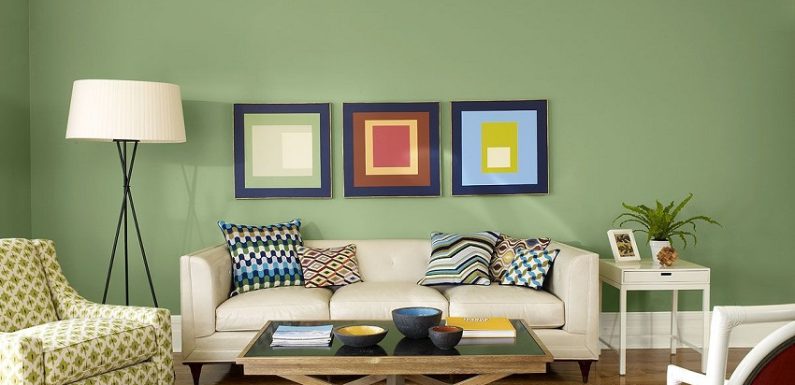
A splash of color can completely transform a room. When decorating your home, choosing the color schemes that you want in each room could potentially be one of the most important decisions you make. But choosing the right shades and tones can be a tricky job. If you end up hating it, you are guaranteed to notice and be slightly annoyed by it every time you enter the room; if you get it right, it will hardly ever cross your mind, but you will love spending time in there. To avoid making the wrong choices, here are ten things to consider when choosing color schemes for your home.
1. Creating Mood
Different colors can make you feel different things. Soft blues and purples are often associated with calmness and serenity, whereas bright colors give you some excitement and energy. When picking colors in your home, think of the purpose of the room and the feelings you want to create while you’re in there. If you’re unsure of where to start, try creating a mood board to get a feel for which sorts of colors make you feel different things.
2. Avoid Monochrome
Using black, whites and grays can give you a clean and finished look, but you want your house to feel like a home, not clinical. Monochrome is boring, and a palette you should try and avoid. It may have been popular at one point and is commonly found in rental properties, but to give your property the homely feeling that you desire, always opt for color.
3. Layering
Often, it is best to begin with a neutral backdrop and build up your use of color through furniture, accessories and art. Having a bright signature couch as your centerpiece in a living room with sandy walls and flooring is a hot style. Begin light and plain, and layer the color on top. This gives you the chance for regular change ups too!
4. Pretty Pastels
You want your living space to be light and open, so the coloring needs to reflect this – not only the walls and floor, but the items you have in the room too. SMEG luxury homeware comes in a range of pastel colors; match your Smeg kettle with the toaster and coffee machine to give your kitchen a luxurious color scheme. The enamel gives a sparkling finish to Smeg appliances, partnering beauty with functionality.
5. Patterns Are Your Friend
While it is best to keep backgrounds minimal, that is definitely not the case for everything else. Patterns are your friend; they bring life, energy and color to a room. People often shy away from pattern and are a bit scared of it but matching the colors in bold pieces to other plain items makes things pop.
6. Bold Contrasts
To give a room character and interest, using bold contrasting colors can be really effective. But be careful with this one; there is a fine line between carefully curated contrasts and unappealing clashes. Pink and green create contrast and is a common color combination, but yellow and purple create a harsh clash. Before you commit to a contrast, create a mood board to test it out.
7. Cohesive and Coordinated
Coming back to that key word that we want to avoid at all costs: clash. Patterns and contrast can make a room come alive with character, charm and style. But when using patterns, coordinate at least one of the colors with other items in the room to make sure you have an overall cohesive finish to the look of the room.
8. The Effect of Lighting
Light in a room can affect the way the color looks and feels. When the sun is shining through the window in the day, your light color choices will be bright and cheery, but as it gets darker or under artificial lighting, they could give off more of a cold feel. Remember that color will appear different throughout the day, and as the seasons change, so pick wisely when choosing color schemes to use in your home.
9. Separation and Flow
Having different color schemes for different rooms is okay. In fact, it’s more than okay, and actively encouraged. You want each room to create a different mood because they have different purposes and functions. It’s fun to have unique themes and colors in different rooms, but when rooms are adjacent to each other, there needs to be some essence of flow and connections between the styles.
10. Try Before You Buy
Before you commit to anything, it’s always best to try it out. Once again, mood boards and color charts are really useful design tools to make sure you are going to be completely happy with the outcome. After all, it is you that is going to have to see it every day.
You want to feel comfortable, cozy and happy in your home, and the way you use color can affect this massively. But by using these ten points to guide your decisions, you are sure to make the right choices for you and your home.

